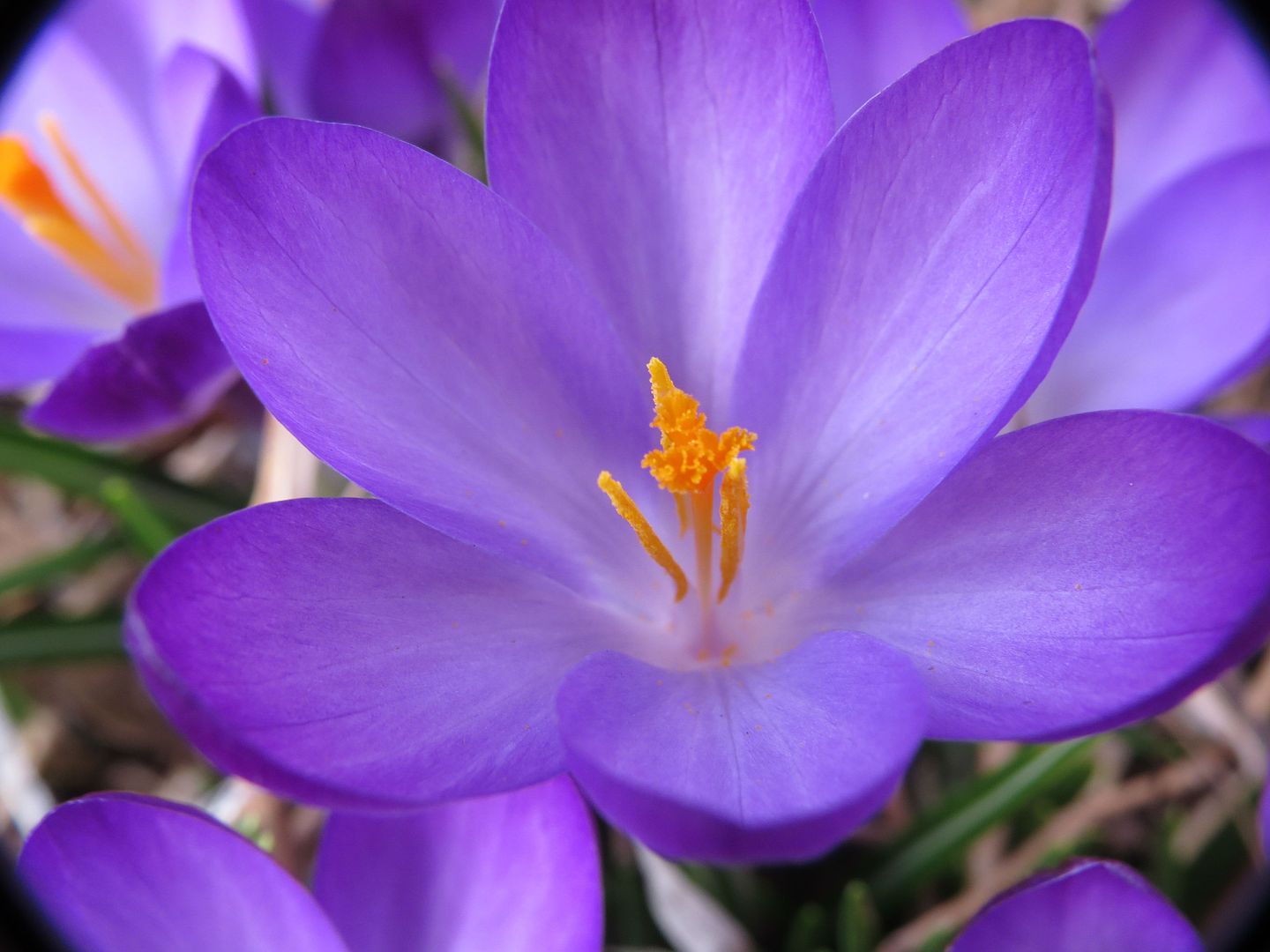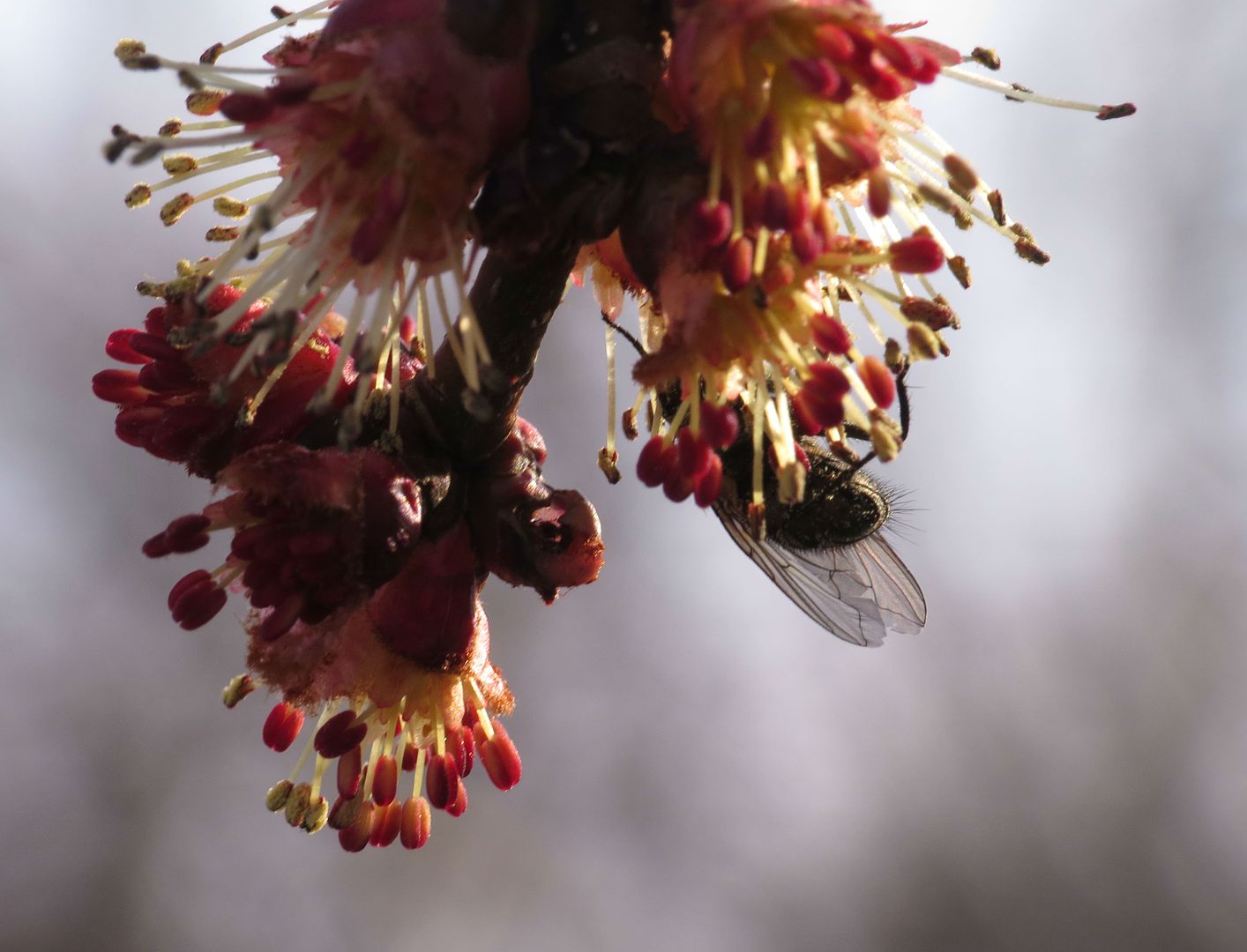Tuesday, March 25, 2014
Some Men Just Want to Watch the Whole World (Prescribed) Burn
This is the most bad ass thing I've ever seen.
Monday, March 24, 2014
Some Early Flowers
I saw a "meme" the other day... Basically it's a single picture usually with a sentence or caption to convey a quick thought. This one showed a whole bunch of different types of flowers and most of them had an X over them because they weren't native. This was intended to tell people to plant native plants for pollinators over nonnatives. But there was no rhyme or reason to what they'd crossed out. The only two they hadn't crossed out was the New England Aster and Sunflowers, and while these were the only two natives on the list, they hardly feed pollinators adequately through the year. I'd say the earliest either of them would flower was in July.
One of the plants crossed on was the Crocus. This is a nonnative bulb native to the mountains in northern Europe and Asia. To be perfectly honest, I don't know why they crossed it off. It's good to be a purest about natives and all but if your goal is pollinator diversity then surely planting anything that's pollinator friendly would work. What they should have done was listed a bunch of invasive plants with natives or even mixed flowers from around the world that aren't invasive and crossed out the bad ones.
Crocuses on their own are not invasive, barely reproduce by seed, and take forever to form a clump. What's more they're easier to grow and flower earlier than most of our native ephemeral. They're a bright source of pollen for honeybees on the warmer days of later winter into spring, and don't crowd out other plants. They can actually be planted right in your lawn and allowed to spread modestly. After flowering they form a low clump of grass that later dies back in the summer.
Natives blooming at this time are few and far between. Symplocarpus foetidus, Skunk Cabbage, is flowering out in the wetter parts of forests now but flies visit their foul smelling flowers more often than bees.
The earliest Maples, Acer sp, have also started flowering and will become the main source of early nectar in the coming weeks. Here I managed to find a common house fly pollinating the blooms on a low branch. There were a few bees about too but their images came out even worse than this one.
Willows, Salix sp, have also been flowering for a few weeks now but are only a source of pollen. Most shrubs in the genus are wind pollinated but insects can't help but collect it anyway.
So when it comes to pollinators we shouldn't be crossing plants off the list just because they're not native. The only ones that should be avoided are ones that are invasive, or perhaps double flowering and cultivated into sterility.
Native alternatives to Crocuses would be either Pasque flower (native to the mid-west) or Hepatica, but neither are flowering at this time as far as I know.
One of the plants crossed on was the Crocus. This is a nonnative bulb native to the mountains in northern Europe and Asia. To be perfectly honest, I don't know why they crossed it off. It's good to be a purest about natives and all but if your goal is pollinator diversity then surely planting anything that's pollinator friendly would work. What they should have done was listed a bunch of invasive plants with natives or even mixed flowers from around the world that aren't invasive and crossed out the bad ones.
Crocuses on their own are not invasive, barely reproduce by seed, and take forever to form a clump. What's more they're easier to grow and flower earlier than most of our native ephemeral. They're a bright source of pollen for honeybees on the warmer days of later winter into spring, and don't crowd out other plants. They can actually be planted right in your lawn and allowed to spread modestly. After flowering they form a low clump of grass that later dies back in the summer.
Natives blooming at this time are few and far between. Symplocarpus foetidus, Skunk Cabbage, is flowering out in the wetter parts of forests now but flies visit their foul smelling flowers more often than bees.
The earliest Maples, Acer sp, have also started flowering and will become the main source of early nectar in the coming weeks. Here I managed to find a common house fly pollinating the blooms on a low branch. There were a few bees about too but their images came out even worse than this one.
Willows, Salix sp, have also been flowering for a few weeks now but are only a source of pollen. Most shrubs in the genus are wind pollinated but insects can't help but collect it anyway.
So when it comes to pollinators we shouldn't be crossing plants off the list just because they're not native. The only ones that should be avoided are ones that are invasive, or perhaps double flowering and cultivated into sterility.
Native alternatives to Crocuses would be either Pasque flower (native to the mid-west) or Hepatica, but neither are flowering at this time as far as I know.
Labels:
Crocus,
Fly,
Maple,
Skunk Cabbage
Monday, March 10, 2014
Flowers and the Flowershow
It begins!
My hives seems to have survived the winter, and they were bringing in all sorts of pollen. Despite off and on snow storms (with some more on the way even!) crocuses and some willow trees have started to flower. Snowdrops are also in bloom here but not as abundant as the others. I see maple tree buds are starting to swell so it's good to see spring is coming.
Also: I normally do a yearly post on the Philadelphia International Flower Show. While I did go this year I have to say I've never found flowers to be so sedating. A lot of the displays were over designed, using plants more as a material to display color and texture, than anything practical in a garden. Here was a chance to make the Mona Lisa with flowers and instead they plucked the peddles and leaves off of the plants and glued them to the wall.
 |
| Balls? |
 |
| Knitting needles with doughnuts? |
The most successful designs I felt were ones that were made to be glorified vases, that played with light and color to great effect.
The theme was "Articulture" which combine the thrill of art with the boredom of wandering an art museum. But it lacked the history and signatures of the great minds that helped create. Art museums tend to be laid out in a specific way, grouping like-pieces together from parts of the world or periods in history. It's interesting to see in the older pieces how subdued and orange-like the reds are because no one knew how to make the ruby red lipstick shades we have today. It was somehow more practical to use real gold instead of yellow at the time too. No one knew how to draw three dimensional spaces yet and portraits were generalized, almost caricature-like. Eventually we see more colors coming into play, and portraits start to look more and more like people. Sadly there wasn't a whole lot of that going on except for one area in the back.
This was my favorite display there. It's a shame the rest of the art show wasn't more like this. It pays tribute to the artiest in different styles but could have done more to incorporate the flower theme a little better.
I actually liked this display for its design but unfortunately I can't help shaking his feeling that I've seen it before at the Philadelphia Flower Show on past years.
There was a painting to go along with this display. Basically the painting was the blueprint for the design here which was mostly brown with a blue pool and half circle in it. It's a good representation and I like that they used ... it looked like almost all native meadow plants in winter. It suggests that the painting could appear in different colors at other times of the year.
I actually hated this design because of how impractical it would be to plant. It's a nice collection of evergreens in a nice display but you might as well have planted a topiary garden because most of these trees want to grow 25' tall.
Show me Dutch Wave, Cottage Style Garden, Naturalistic Style and turn that into a painting so it doesn't just look like another landscape.
It was an okay theme this year, just not fully envisioned to its potential or perhaps taken in more by the idea of modern art. Paintings as a commodity, a speculative bubble waiting to burst just as the Tulip craze did so many years ago.
Labels:
Art,
Crocus,
Design,
Flower Show,
Honeybees
Subscribe to:
Posts (Atom)











